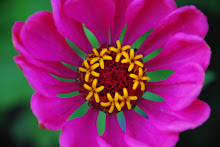Herbs are one of my favorite plants to grow in the garden. A garden of any size can squeeze in a few herbs. I grow about 50 varieties of herbs in my small urban garden. In my current garden of the last 6 years I dedicate one of my four raised beds exclusively to herbs. This allows the space for perennial herbs to thrive without interfering with my crop rotation of vegetables, annual herbs, and flowers in my three other raised beds. In addition to the one raised bed I grow about 20 containers of herbs.

Herb raised bed 5-30-2016
Many herbs grow well in containers given a few simple considerations. Make sure the containers are sited in the individual herb's sun preference, the container are at least 10 inches diameter, they receive adequate water, and are annually divided and repotted as needed.
Herbs are a diverse group of plants that grow in many shapes and sizes. It is helpful to understand if your herb plant is an annual, herbaceous perennial, or evergreen perennial and their size at maturity.

Containers of herbs, annual flowers, and vegetables 5-30-2016
I have successfully grown these herbs in containers:
Angelica
Basil
Bay Leaf
Chamomile-German, Roman
Chervil
Chives
Cilantro
Dill
Feverfew
Hyssop
Lavender
Lovage
Lemon Balm
Lemon Verbena
Mint-Apple, Chocolate, Orange, Peppermint, Spearmint
Oregano-Greek, Italian
Rosemary
Sage-Berggarten, Clary, Pineapple, Purple, Tricolor, and Tangerine
Scented Geranium
Society Garlic
Thyme-english, french, lemon, lime

A row of mint, lemon balm, and feverfew containers in a partly sunny location 5-30-2016
Mint and lemon balm spread aggressively in the garden by underground runners. I prefer growing these plants in pots so I can keep them under control. Mint grows successfully in containers and is a good example of a type of herb that needs an annual division and repotting. Mint roots are so aggressive they will literally choke the root ball when grown in a container.

Mint root ball taken out of container!
Other herbs grown in containers that benefit from dividing and repotting=lovage, lavender, rosemary, oregano, sage.
March is an excellent time for dividing and repotting perennial herbs. The weather is cool and most herbaceous perennial herb plants are just beginning to show signs of spring growth. Dividing and repotting perennial herbs will promote a healthier more lush plant with improved abundant harvest.
To prepare for dividing and repotting herbs here are the supplies you will need:
Bag of organic potting soil
Organic granular fertilizer
Trowel
'Hori Hori' garden knife
Pruners
Bucket of soapy water
Hose
Here's what I do to divide and repot mint grown in containers:
1. Bring pots to a raised work surface like potting bench or table
2. Prune off all dead stems and leaves to soil surface
3. Gently remove root ball from container
4. Set container aside, wash inside and out with soapy water, rinse well with hose
5. Take root ball and shake away old potting soil, compost or spread old soil around garden
5. Use garden knife to cut away any roots that have wrapped around in circles
6. Dispose of roots in trash or curbside recycling, never in your own compost bin or around your garden-unless you want mint to take over!
7. Use garden knife to cut root ball in half
8. Refill washed container half full with new potting soil and mix in organic fertilizer
9. Replace new half root ball and fill in with soil
10. Replace plant marker and water container
11. You can replant the excess root ball or roots in a new container for additional plants
Even if I am not dividing an herb plant, if it is grown in a container I annually top dress the container with organic granular fertilizer and a layer of fresh potting soil.

A variety of herbs and annual flowers in containers 5-13-2016
I hope you are inspired to try herb gardening in containers. Herbs are so magickal and beautiful in the garden, as well as irreplaceable and essential for delicious seasonal cooking.
You are invited to join me at one of my upcoming culinary herb gardening classes on March 18th or April 9th
Happy Gardening,
Jolie

The herb raised bed garden is just waking up! 3-9-2017



















